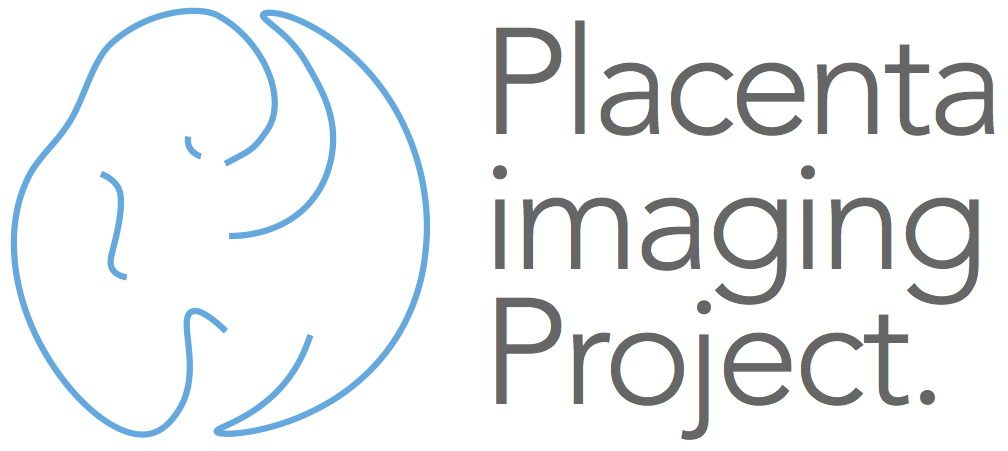Study Details
- To optimise a placental imaging protocol using conventional T1 and T2 weighted sequences
- To use these datasets to explore placental dimensions, shape and signal intensity and registration with each other and additional image datasets
- To optimise diffusion tensor imaging (DTI) to identify differences in placental microstructure in high- risk pregnancies characterised by disordered implantation e.g. fetal growth restriction and preeclampsia. To ascertain the safety of a MR elastography (MRE) in assessing the human placenta. This work will initially involve non pregnant subjects, animal models and delivered placentae
- To ascertain the role of an oxygen inhalation MR technique for looking at perfusion across the placenta in normal and abnormal pregnancies. This initial work will be carried out in Nottingham using separate ethics)
- To use fetal ECG to obtain fetal ECG recordings to compare within normal and high risk pregnancies and with the MR data.
- To use a combination of all these techniques to study the placenta in a group of normal and high risk pregnant women and in a group of women with a high BMI.
- To collect contemporaneous serum biomarkers of placental function and ultrasound and US Doppler data.
Diffusion MRI sensitises the MR signal to water molecule dispersion through incoherent Brownian motion. The micron-scale architecture of the tissue determines the dispersion pattern over the millisecond timescale to which diffusion MRI is sensitive. Through a model of the underlying tissue, we can predict the dispersion of water molecules and subsequently the MR signal. Conversely, combinations of diffusion MR signals support estimation of model parameters that relate to intrinsic microscopic tissue properties. Simple diffusion MRI applications estimate the apparent diffusion coefficient (ADC) or diffusion tensor, which act as surrogates for tissue properties, but tend to be non-specific. Intravoxel incoherent motion (IVIM) is another common component of the dMRI signal in biological tissue. It is associated with a much higher pseudo diffusion coefficient that arises from flow in multiple directions, e.g. in the capillary network, appearing as pseudo-diffusion at the voxel scale. Microstructure imaging is an emerging biomedical imaging paradigm that uses non-invasive techniques, such as MRI, to infer and map information about microscopic tissue architecture (micrometre or nanometre scales) in macroscopic images (millimetre scale resolution). The idea addresses a key limitation of most non-invasive imaging techniques: lack of specificity – differences in image intensity can arise from a wide variety of changes in tissue, so are difficult to attribute to a specific pathology. Microstructure imaging uses a mathematical or computational model to relate MR signals to features of the underlying tissue. From a set of suitably informative images, we can then solve an inverse problem in every image voxel to estimate and map tissue features.
In this study we will build on the successful body of work in brain and cancer imaging to develop a diffusion-based microstructure-imaging technique specifically for the placenta. New models will separate blood and cellular signals to enhance analysis of fetal and maternal perfusion and uniquely probe cellular/villous architecture, both aiming for new and early indicators of impaired implantation and placental dysfunction.
Conventional palpation and static US elastography imaging provide an indirect assessment of mechanical properties of internal tissue by assuming that observed deformation at depth is directly proportional to local stiffness, which ignores the impact of overlying tissues. Unambiguous measurement of tissue stiffness requires both the local force and local deformation to be determined. Static elastography lacks local force information but this can be achieved by transient/dynamic elastography methods which utilize low frequency mechanical waves]. Tissue biomechanical properties can be measured in vivo precisely and in an unbiased way via magnetic resonance elastography (MRE), with very promising results for liver fibrosis, breast cancer, and neurodegenerative diseases. A safety study of MRE displacement data from 29 MRE exams, including liver, brain, kidney, breast, and skeletal muscle, has provided evidence that vibrational exposure is well within accepted safety guidelines. Generally MRE employs mechanical transducers in contact with the patient to generate mono-chromatic low frequency waves (~50Hz) that propagate through tissue and visualised using phase-locked motion sensitized MR sequences. Local shear stiffness is then extracted from the images by solving the underlying wave equation. We have previously used MRE in the liver, brain, breast, and prostate.
Transient shear wave elastography (SWE) with US detection has been applied successfully to in vivo quantitation of placental elasticity in preeclampsia and has demonstrated that the stiffness of the placenta is significantly higher in these patients. Those data only present a local snapshot and do not provide a full picture of the biomechanical integrity of the placenta. The rather complex geometry present in the placenta favours full 3D elastography approaches, which provide novel information due to significantly enhanced precision. This advantage of MRE (3D) over US elastography (1D) has already been demonstrated in the context of liver fibrosis staging. Initial SWE results indicate increasing values of Young’s modulus of placental tissue associated with increasing intervillous fibrin deposition in placental terminal villi. The villous being the functional unit in the placenta permitting effective exchange of both oxygen and nutrients form mother to fetus. However, other expected correlations to collagen fibres in terminal villi or to the density of terminal villi are currently not observed. It is likely that this is due to missing precision in the US-SWE method. Furthermore, vascular re-organizations are very pronounced within the placenta, and we expect that multi-frequency MRE will reveal those changes via scattering induced modulations in the dispersion properties of the phase velocity.
MR Oxygenation

